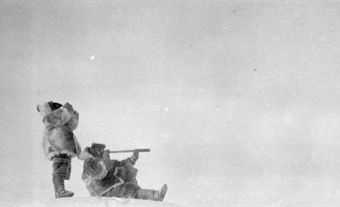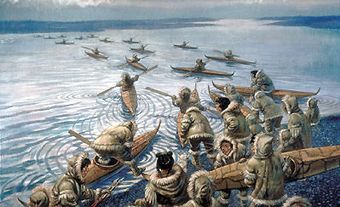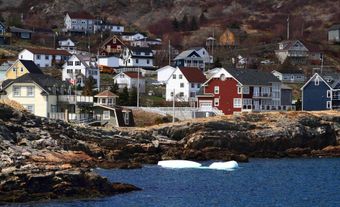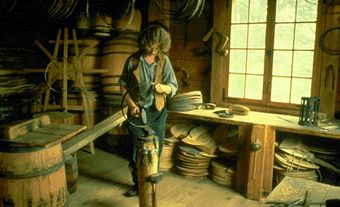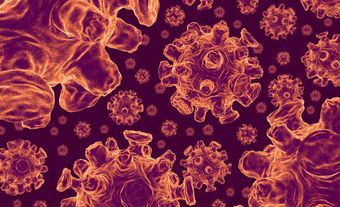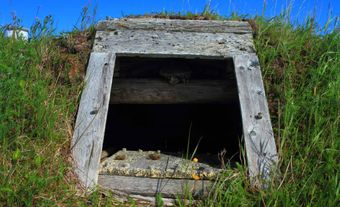For generations, Hebron, one of Nunatsiavut’s (see Labrador Inuit and Newfoundland and Labrador) most culturally important and significant sites, was an important meeting place for the Inuit, as well as a primary hunting and fishing area. In the early 1800s, Moravian missionaries chose the site to establish their fourth and northernmost mission in Labrador, officially opening the mission in 1830 (although missions were later established farther north, at Ramah in 1871 and Killinek in 1905). For more than 130 years, Hebron was a thriving community where an average of 200 to 250 Inuit lived. In 1959, without consultation with the Inuit, the community was closed, forcing all Inuit to relocate. Declared a National Historic Site in 1976 by the federal government, the Hebron Mission has been undergoing major restoration since 2004.
Prior to European Contact
Located about 40 km above the treeline and close to the southern limit of the Torngat Mountains National Park, Hebron is known to the Inuit as Kangerdluksoak (“the Great Bay,” also spelled Kangikluksoak or Kangertluksoak). Since time immemorial, the site, located on the edge of a large bay sheltered by a small cove, has also been a meeting place for Inuit from different regions.
The area has always been a primary hunting and fishing area with a large variety of animals in abundance: sea mammals like harp seals, jar seals, square-flipper seals, walruses, white whales, jumpers and polar bears; land mammals such as white and red foxes, otters, caribou, black bears, Arctic hares, and rabbits: fish such as char and cod: and birds like geese, eider ducks, black ducks, mergansers, loons, and harlequin ducks.
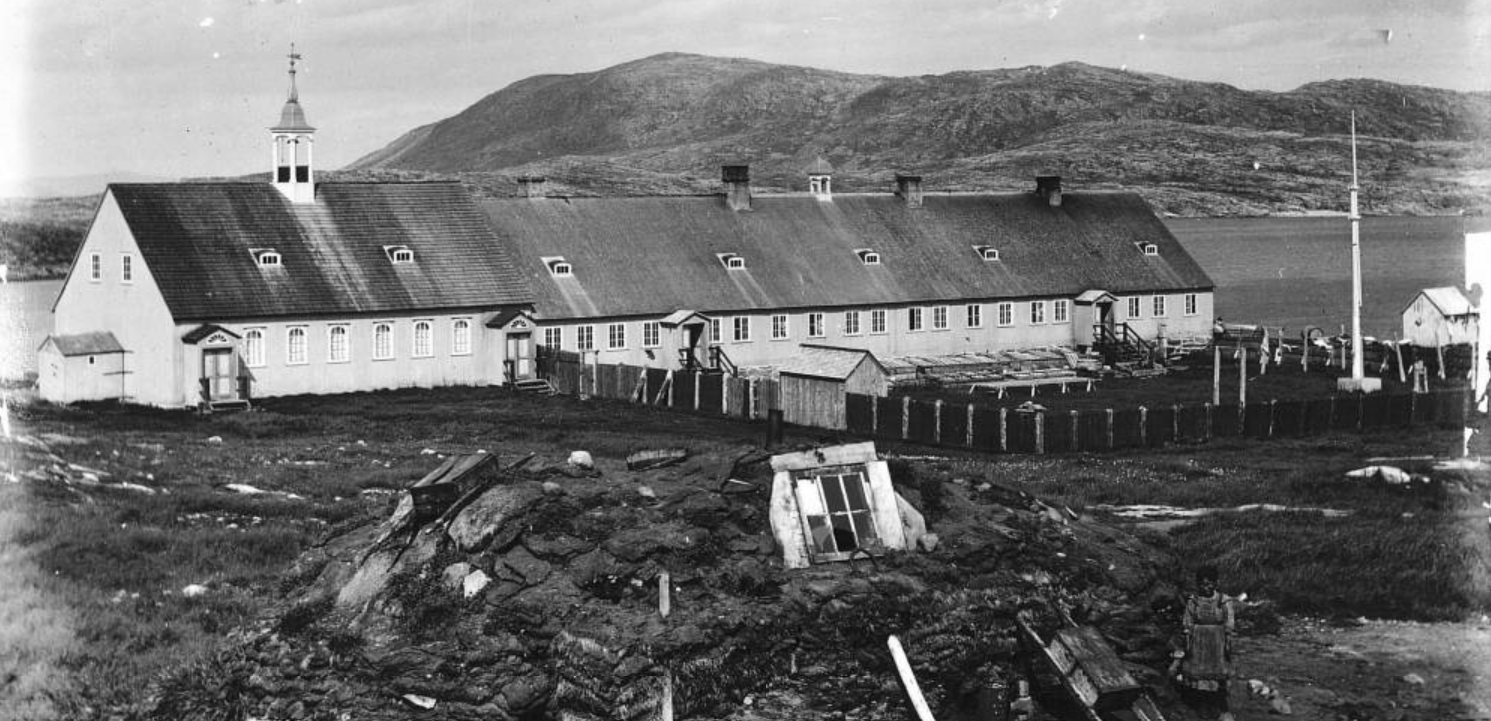
Hebron Mission with Inuit sod house in foreground.
Moravian Settlement
By the early 1800s, Moravian missionaries needed to open their fourth mission in Labrador in order to attract the non-Christian Inuit from the northern fjords. They identified Kangerdluksoak as their place of choice and gave it the biblical name of Hebron.
Mission work started at Hebron in 1818, but it wasn’t until 1827 that a small blockhouse was built as a seasonal outpost for missionaries on visits to local Inuit. According to an historical account, it took a huge effort to build:
In 1828, the mission ship Harmony and the Oliver left London, England loaded with 60,000 bricks, lime, boards, planks, doors, windows, glass and nails. They arrived in Kangerdluksoak Bay in July, where timber beams, rafters and shingles were already waiting. Inuit from OkKak had carried these supplies by dog team, in 137 journeys over the spring ice.
In 1831, once the temporary quarters were completed, the first permanent missionaries were appointed to Hebron. By the end of 1831, the congregation included 102 Inuit.
In the spring of 1835, a new 53-metre-long, 10-metre-wide and 1-storey-high building was erected to house the church, the missionaries’ quarters and storage. It was completed in October 1837 and still dominates Hebron’s landscape.
From the mid-1800s to the early 1900s, the population of Hebron stabilized with an average of 200 to 250 Inuit. Inuit staying at the mission lived in sod houses partially dug into the ground with a whalebone or wooden frame covered with sod and a seal-gut window. The large number of sod houses and skin tents at Hebron indicated the importance of traditional subsistence activities.

Illustration of the mission at Hebron around 1860, by Moravian Bishop Levin Theodore Reichel (1812-1878). Courtesy of Memorial University of Newfoundland, Digital Archives Initiative (CC BY-NC-ND 2.5 CA).
Spanish Flu (1918)
Nowhere on earth was the 1918 Spanish Flu epidemic (see Influenza) more deadly than in Northern Labrador. Hebron lost close to two-thirds of its population (about 150 people died in a population of about 220). The influenza virus was brought to the community by a sick sailor on the Moravian missionary ship, Harmony.
Following the tragedy, all Inuit sod houses at Hebron were burned. The Moravian Church considered closing the mission but eventually decided to close their mission in Killinek instead. The Inuit families from Killinek who moved south to Hebron contributed to repopulating the station.
Second World War
In July 1943, as the Second World War was raging, the US Army obtained the Newfoundland government’s approval to install a secret weather station at Hebron. This installation was considered of vital assistance to the war effort. It would allow the Allies (Canada, Great Britain, the United States, and its allies) to collect and disseminate weather data, essential for flying the bombers safely between North America and Europe. Having servicemen in Hebron would also enable the Allies to keep an eye on the Moravian missionaries who were suspected of being German sympathizers.
The US weather station in Hebron was in operation until February 1946, but its existence remained secret until 2017.
Closure of Hebron
On Easter Monday 1959, the people of Hebron were assembled in the Moravian church where representatives of the Newfoundland government, the Moravian Church, and International Grenfell Association announced their decision to close the mission. Since the gathering was being held inside the church, a place where arguments were not allowed, the Inuit could not say a word. They felt betrayed to not have been given notice or an opportunity to discuss the move.
Most of the 58 families were relocated to other communities below the treeline where they were not familiar with the local surroundings and where the hunting grounds and fishing berths were already occupied. Families were separated and most were sent to Hopedale, Makkovik or Nain. Houses were not ready when the relocatees arrived. When the accommodations were finally built, they were crowded in “little Hebron” villages. These villages were on the edges of the existing communities, reinforcing the isolation many Hebron Inuit already felt.
It took 46 years for the Government of Newfoundland and Labrador to formally apologize for the forced relocation of the people of Hebron. The apology was delivered in 2005 by Premier Daniel (“Danny”) Williams:
The Government of Newfoundland and Labrador, on behalf of the citizens of the province, apologizes to the Inuit of Nutak and Hebron for the way in which the decision to close those communities was made and for the difficulties experienced by them and their descendants as a result of the closures.
In 2009, on the 50th anniversary of the relocation, a memorial was unveiled at Hebron. It consists of three bronze plaques: the names of all individuals relocated from Hebron, the text of the government’s apology and the text of the Labrador Inuit’s acceptance of the apology.
At the unveiling ceremony, Andrea Webb, a relocatee, read the statement of acceptance:
We accept your apology — for ourselves, our ancestors and our descendants. We have waited over 45 painful years for this apology, and we accept it because we want the pain and the hurting to stop. Hearing your apology helps us to move on.… We forgive you.

Hebron Mission National Historic Site of Canada, 2009 (Courtesy of France Rivet).
National Historic Site
On 6 November 1976, Parks Canada declared Hebron a National Historic Site, recognizing its importance. Sixty years after being abandoned, what remains of Hebron is mainly ruins, apart from the main mission building.
Since 2004, the Nunatsiavut government has been conducting a major restoration of the Moravian Mission with hired carpenters who are relocatees or their descendants. In 2016, the Nunatsiavut government was honoured with a provincial heritage award (the Manning Awards for Excellence in the Presentation of Historic Places) for its efforts to preserve and restore the Hebron Mission. The Mission was deemed one of Newfoundland and Labrador’s most culturally important and significant sites and a lasting symbol of the Moravian presence at Hebron.

 Share on Facebook
Share on Facebook Share on X
Share on X Share by Email
Share by Email Share on Google Classroom
Share on Google Classroom
